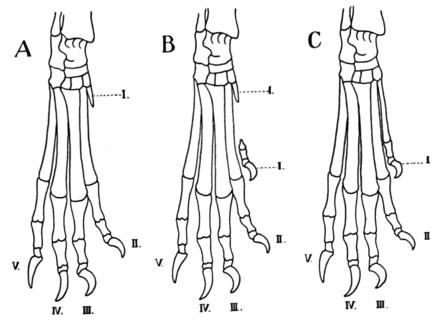Fig. 2. A series showing the normal and polydactyl structure of the skeletal elements in the pes of the dog. A, normal pes with the rudimentary metatarsal bone of digit I.; B, a polydactyl pes, the hallux represented by two phalanges and the distal end of the metatarsal bone; C, polydactyl pes with hallux (I.) completely developed.
circumstantial evidence, but direct proof that the extremities of the ungulate have been derived by evolution from a five-toed type. This is an important point, but one about which investigators have been at variance. Bardeleben, Kollman, Marsh, Blanc and others recognize all cases of polydactylism as due to reversion. Gegenbaur warns us against such general conclusions, but admits that the extra digits sometimes found on the extremities of the horse are developed from the digital rudiments. Weismann, Bateson and Wilson ascribe all such abnormalities to germinal variation. But germinal variation may affect the rudimentary as well as the functional digits; if through such variation the supposed rudiment of a thumb develops into a digit with two phalanges, germinal variation and reversion are one and the same thing.
To attempt to reconcile the conflicting statements of various investigators the writer has made a comparative study of polydactylism in mammals normally possessing less than five toes. It was found that in the majority of cases the extra digits are developed from the so-called digital rudiments. This is most frequently observed in the pes of the
Fig. 3. A series to show the reversion of the pig's manus to the pentadactyl condition. A, carpals and metacarpals of the fossil Ancodus; B, of a polydactyl pig; C, of a normal pig. I.-V., first to fifth digits; trz., trapezium, the carpal element of the pollex.



